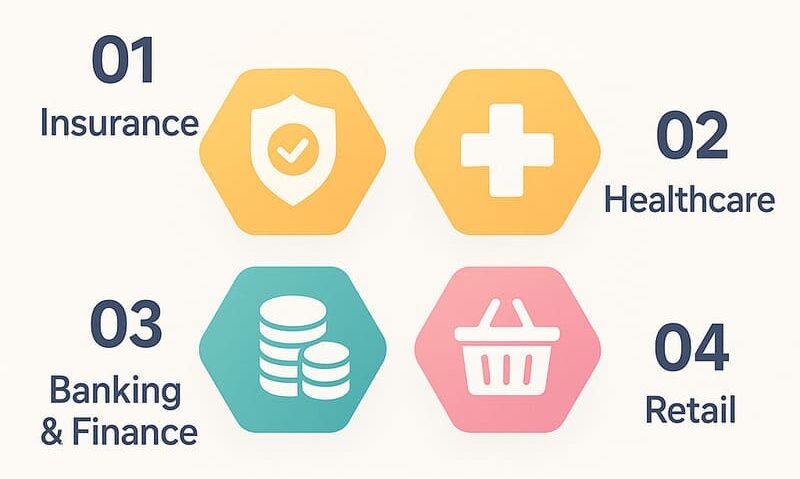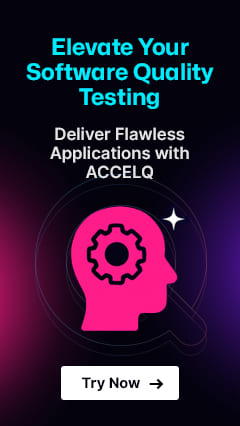Gen AI Use Cases: Practical Applications and Enterprise Framework

The potential of generative AI (Gen AI) has moved beyond the research lab and is now at boardroom tables, demonstrating considerable influence as one of the most powerful AI solutions for business today. How do Gen AI use cases differ from the traditional AI systems that we hear about on a day-to-day basis?
Unlike most AI, which is largely about prediction and classification, Gen AI is capable of being creative, for example, generating new text, images, code, music, product designs, or even human behaviours and scientific models. This potential to produce new, viable outputs when needed is a game-changer for businesses that seek to innovate and grow at an accelerated pace.
Much of the rapid growth of technology stems from the launch of applications such as ChatGPT and DALL·E, which demonstrated how generative AI applications can be accessible with natural language prompts. But for the enterprise, the value isn’t in those beta programs. It’s in Gen AI use cases that optimize CX, streamline operation costs, speed R&D, and enable away-from-the-competition differentiation.
In this guide, we’ll explore the top generative AI use cases across industries, practical business applications, and even how enterprises are leveraging Gen AI in software testing with ACCELQ Autopilot. We’ll also share a Gen AI framework for implementation and strategies to scale adoption responsibly.
- What Is Generative AI?
- Why Gen AI Matters for Enterprises?
- Generative AI Use Cases Across Industries
- Practical Generative AI Applications in Business
- Generative AI in Testing with ACCELQ Autopilot
- The Gen AI Framework for Implementation
- Building a Gen AI Strategy for Enterprises
- Challenges and Risks in Generative AI Adoption
- How Enterprises Can Get Started with Gen AI?
- Conclusion
What Is Generative AI?
Generative AI refers to algorithms and foundation models, such as large language models (LLMs) and diffusion models, that learn patterns from vast datasets and then generate new outputs that mimic those patterns without simply repeating the data.
Unlike traditional AI, which classifies or predicts, Gen AI generates new content, making it a creative partner for businesses. For example, in Gen AI use cases in business, enterprises can:
- Generate synthetic data to improve risk modeling.
- Create design prototypes for manufacturing.
- Draft and summarize content for marketing, HR, and customer service.
- Automate code generation for IT modernization.
This versatility positions Gen AI as one of the most powerful tools for artificial intelligence industries across healthcare, banking, insurance, manufacturing, and retail.
Why Gen AI Matters for Enterprises?
Enterprises are investing in Gen AI strategy because the technology directly connects to business goals:
- Scalability: Serves enterprise AI use cases across the business, HR chatbots, marketing campaigns, and compliance reporting.
- Ease and speed: Takes over boring tasks, such as creating reports, product descriptions or test cases.
- Innovation: Allows identification of new drugs, alloys, or design models at scale.
- Customer interactions: Individualized engagements via AI-led recommendations, virtual assistants and tailored services.
Given the proper use cases for AI and the ability to drive AI with KPIs that matter, such as revenue growth, cost reduction, customer satisfaction, or customer retention, you can start to realize real and tangible returns on Gen AI.
🌐 Ready to embrace smarter, more efficient automation?
Generative AI Use Cases Across Industries
Here are four generative AI use cases in insurance, healthcare, banking industry and retail that show how the technology promises to revolutionize customer-facing engagement as well as backend operations.

Generative AI Use Cases in Insurance
The insurance industry thrives on data, from underwriting to claims management. Gen AI enhances efficiency by:
- Claims automation: Running a claim summary and checking the policy against claims automatically.
- Fraud detection: Training fraud detection models on synthetic data with different scenarios.
- Customer support: AI-enabled assistants to respond to policy questions in natural language and enhance customer retention.
Generative AI Use Cases in Healthcare
Healthcare organizations are exploring generative AI applications for faster innovation and improved care:
- Drug discovery: Identifying new molecules and simulating chemical interactions.
- Medical imaging: Creating predictive images for early disease detection.
- Patient engagement: Personalized health recommendations and AI-generated visit summaries.
Generative AI Use Cases in Banking & Finance
Finance and banking are built on accuracy, where Gen AI is necessary and has an impact:
- Risk modelling: Creating synthetic transactional data for stress testing.
- Customer service: Virtual financial assistants to assist in account management, loan questions, and fraud notifications.
- Regulatory compliance: As in – reporting that can be automated to meet a regulation.
Generative AI Use Cases in Retail
Gen AI helps retailers deliver hyper-personalized customer experiences:
- Personalised marketing: Creating individualised product recommendations and copywriting ads.
- Virtual try-ons: Generating images for AR/VR fashion shopping.
- Supply chain optimization: AI-based demand forecasting and scenario planning.
Practical Generative AI Applications in Business
In addition to industry use cases, the following are a few examples of business use cases to which companies are applying AI:
- Content generation: Reports generated by machine, marketing copy and legal drafts.
- Software engineering: Developing, debugging and updating legacy systems.
- Customer engagement: Smarter, more human chatbots, virtual agents.
- Knowledge management: Automated summarization and classification of enterprise documents.
- Design and prototyping: Generative design in manufacturing and architecture.
These AI agents in software testing and Gen AI in business applications show measurable benefits like shorter release cycles, improved employee productivity, and faster product development.
Generative AI in Testing with ACCELQ Autopilot
Beyond business applications, one of the most impactful areas where Gen AI is driving measurable ROI is software testing. With the rise of complex enterprise applications, traditional testing approaches often fail to keep up with speed and scale. Generative AI fills this gap by:
- Automated Test Case Generation: Creating end-to-end test cases directly from user stories or requirements.
- Self-healing Scripts: Automatically updating broken test scripts when underlying applications change.
- Intelligent Test Data Generation: Producing synthetic test data that mirrors real-world scenarios while ensuring compliance.
- Smart Test Optimization: Prioritizing test cases based on risk and historical defect patterns.
ACCELQ Autopilot, our GenAI-powered automation engine, takes these capabilities further by embedding AI-driven intelligence across the testing lifecycle. From generating executable test assets with plain English prompts to auto-maintaining test suites in real time, Autopilot empowers QA teams to achieve:
- 5X faster test creation
- Up to 70% reduction in maintenance overhead
- Seamless CI/CD alignment for accelerated release cycles
This ensures enterprises don’t just adopt Gen AI for generic use cases but actively operationalize it in testing, where it directly improves release velocity, product quality, and customer experience.
🤖 Meet Your Personal AI AUTOPILOT!
Testing at Hyperspeed Starts Here!
Try Now
The Gen AI Framework for Implementation
Enterprises need a structured framework for implementing generative AI to ensure adoption is ethical, secure, and scalable.
Step 1: Define Business Objectives – Connect the most important ones to the business using relevant KPIs (would they increase revenue, help more customers, improve customer experience, or drive compliance)?
Step 2: Select the Appropriate Model Approach – Options include using off-the-shelf models (like GPT), fine-tuning on enterprise data, or building custom models.
Step 3: Data Governance and Compliance – Enforce strong policies when it comes to IP protection, GDPR compliance and data privacy.
Step 4: Pilot and Scale – Begin with pilots in populations with low-risk AI business use cases, such as customer FAQs, before scaling up to the enterprise workflows.
Step 5: Monitor, Measure, Optimize – Monitor for accuracy, bias, and cost and business impact. Tweak your Gen AI strategy along the way.
Building a Gen AI Strategy for Enterprises
A robust Gen AI strategy ensures use cases move from pilot to enterprise adoption:
- Focus on enterprise AI use cases that generate proven ROI.
- Collaborate with IT and compliance departments to guarantee the responsible use of AI.
- Invest in scalable infrastructure for future Gen AI business deployments.
- Create boards or committees to govern responsible AI.
Challenges and Risks in Generative AI Adoption
As appealing as the potential benefits are, Gen AI does present challenges:
- Prejudice and hallucination: Models may render incorrect or biased content.
- Data privacy/IP: Corporate information may be revealed.
- Cybersecurity risks: Hackers could leverage Gen AI for phishing or scams.
- Sustainability impact: Big models use a lot of energy.
Proactively managing these risks calls for ethical AI frameworks, strong governance and vendor partnerships that emphasize transparency.
How Enterprises Can Get Started with Gen AI?
Organizations new to Gen AI can begin with the following roadmap:
- Begin with pilots: Low-risk, high-impact AI business use cases, such as customer support automation, or content generation.
- Embrace the framework: The Gen AI framework links pilots to enterprise KPIs.
- Select the correct partners: Contract with vendors such as Microsoft, Google, AWS, or even platforms like ACCELQ that integrate AI into workflows.
- Scale with intention: Move from small pilots to enterprise AI use cases across industries.
Conclusion
Generative AI is about more than merely a new technology; it’s a strategic differentiator. From gen ai use cases in healthcare, insurance, banking, and retail to enterprise-wide applications, such as compliance automation and product innovation, Gen AI is revolutionizing the future of work.
Organizations that employ a defined Gen AI framework and planify generative AI applications with business KPIs will realize revenue growth, efficiency increases and stronger customer experiences. “By operationalizing a responsible Gen AI strategy, business leaders can shift from exploring to applying AI and scale AI across the enterprise to drive competitive edge in a market shaped by sudden change.”
Leaders considering AI automation solutions for business are no longer asking “if,” but “how soon,” to begin their enterprise AI use cases that matter.
Balbodh Jha
Associate Director Product Engineering
Balbodh is a passionate enthusiast of Test Automation, constantly seeking opportunities to tackle real-world challenges in this field. He possesses an insatiable curiosity for engaging in discussions on testing-related topics and crafting solutions to address them. He has a wealth of experience in establishing Test Centers of Excellence (TCoE) for a diverse range of clients he has collaborated with.
You Might Also Like:
 How Gen AI is Transforming Agile DevOps
How Gen AI is Transforming Agile DevOps
How Gen AI is Transforming Agile DevOps
 AI Test Automation for nCino | Powering Fintech Innovation
AI Test Automation for nCino | Powering Fintech Innovation
AI Test Automation for nCino | Powering Fintech Innovation
 Gen AI Use Cases: Practical Applications and Enterprise Framework
Gen AI Use Cases: Practical Applications and Enterprise Framework


































